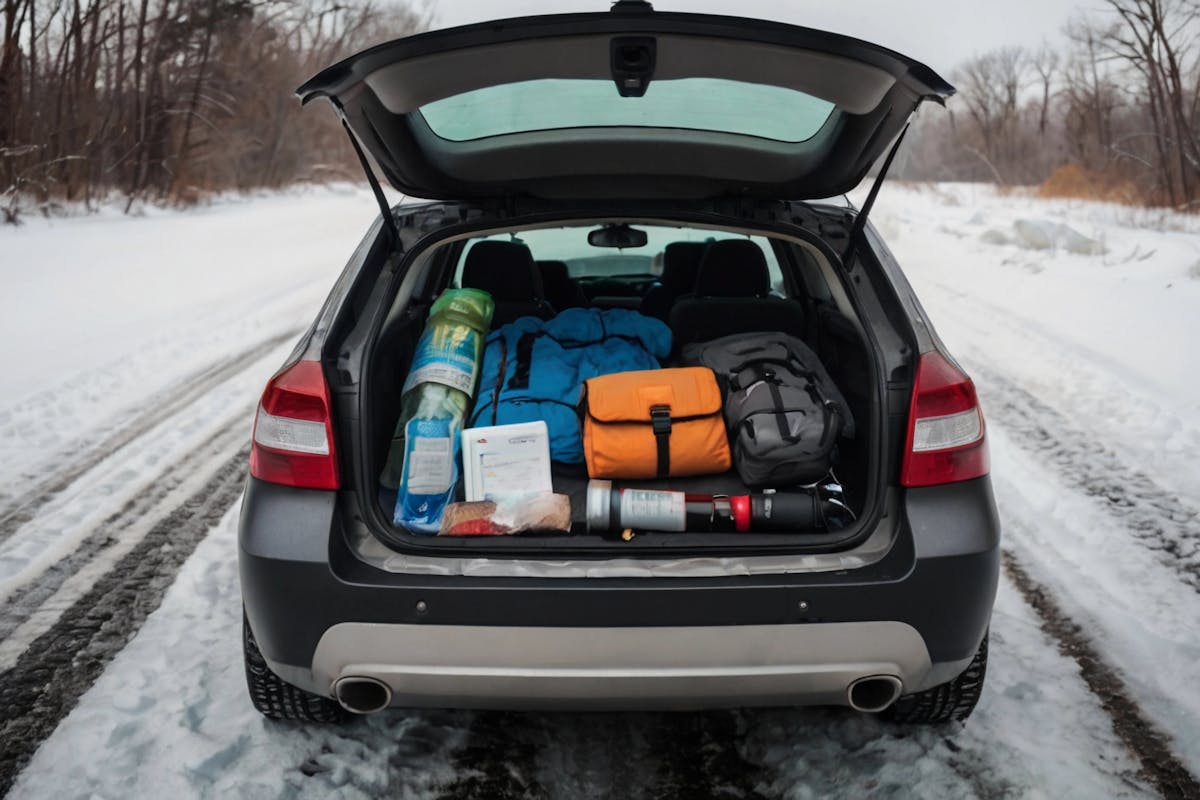What to Include in Your Winter Emergency Kits for Home and Car

As we head into the heart of winter, it’s a good idea to take time to prepare for potential emergencies. Snow or ice storms can wreak havoc on power lines. Icy roads may cause your car to slide off the road, leaving you stranded. While no one likes to imagine the worst, it’s best to be prepared.
We created this checklist to make it easier to put together winter emergency kits for both your home and your vehicle. Hopefully, you won’t need them. But should the need arise, knowing you are ready will give you peace of mind.
Assembling a Winter Emergency Kit for Your Home
The Basics:
- Water: The Centers for Disease Control and Prevention (CDC) recommends having on hand at least one gallon of water per person per day for three days.
- Nonperishable foods: Your emergency kit should also include food items that require little to no preparation to consume. Examples are canned meats, energy bars, applesauce, nuts, and dried fruits.
- Utensils: Don’t forget to have a manual can opener in case the power goes out. You might also want to include a multifunction Swiss army knife.
- First aid kit: Stock your first aid kit with bandages, antiseptic wipes, and pain relievers. These can be purchased inexpensively at home improvement stores and pharmacies. Also include any prescription medications.
Heating and Lighting Supplies:
- Sleeping bags: If your house is without power for even a few hours during the winter, the indoor temperature can drop quickly. Sleeping bags can be a great addition to your emergency closet. But heavy blankets can work, too.
- Light sources: Remember to stock your emergency kit with a variety of lighting options, including LED flashlights and battery-operated lanterns. Have extra batteries available.
Communication Equipment:
- Weather radio: Winter storms can impact television and internet availability. For these times, invest in a battery-operated weather radio.
- Cell phone power pack: While it’s always a good idea to keep your cell phone charged when weather reports indicate a storm is approaching, that’s not always possible. A portable charger or power pack can be a lifesaver during an extended power outage.
Other Necessities:
- Pet supplies: If you have pets, don’t forget to stock up on their necessary supplies. That means having extra gallons of water in your supply closet, along with food and any medications they may need.
- Personal care: Stock items like soap, hand sanitizer, and sanitary supplies. An extra supply of medications is also important.
- Cash: In case of power outages, having cash on hand can be crucial.
Stocking the Car for a Winter Emergency
Basic Supplies:
- Sleeping bag and warm clothing: Keep a sleeping bag in your trunk, along with extra gloves, hats, and scarves. If you don’t normally wear winter boots when you head out, be sure to put a pair in your back seat or trunk.
- Food and water: Also keep a bag in your vehicle with bottled water and nonperishable snacks, such as granola bars, dried fruit, and nuts. Be sure they are items that can be easily opened.
Safety and Emergency Equipment:
- First aid kit: A compact first aid kit tailored for the car can hold essential care items without taking up too much space.
- Road flares or reflective triangles: These increase visibility if you’re stuck on the side of the road.
- Flashlight: Keep it in an easily accessible spot, along with extra batteries.
- Portable phone charger: Ensure your phone stays charged for communication and navigation with a portable charger.
- Area maps: While GPS is common, having a physical map can be useful if your device fails.
Vehicle Supplies and Tools:
- Battery jump-start pack: Essential for starting a dead battery, a jump-start pack is good to have on hand no matter the season. The newer styles are much easier to use than the jumper cables of the past.
- Spare tire and jack: Ensure you have a functional spare tire and jack in the trunk. Even if you aren’t physically able to change a tire yourself, these items will be necessary for anyone you call for help.
- Ice scraper/brush: While most people are aware of the need for an ice scraper or brush, it’s a winter essential you don’t want to be caught without. These are necessary for removing ice and snow from your windows.
- Shovel and traction supplies: A small, collapsible shovel can help dig your car out of snow. And sand or kitty litter can provide traction to help get the vehicle moving again.
Personal Comfort and Care:
- Hand warmers: Disposable hand warmers can provide immediate warmth in frigid conditions. You can find them online and at outdoor retailers and sporting goods stores.
- Care items: Also include items like wipes, hand sanitizer, and tissues. If your trip will take you far from home during the winter, make sure to have a supply of necessary prescription medications, too.
Finally, consider purchasing a mobile monitoring unit. With a simple press of a button on the device, you can quickly be connected to help in the event of an emergency. Call 1-844-203-5617 to learn more!